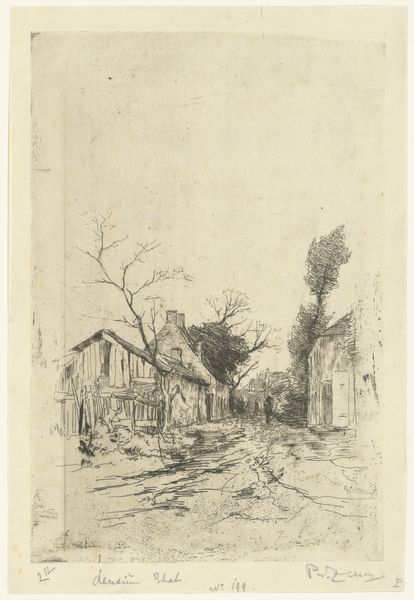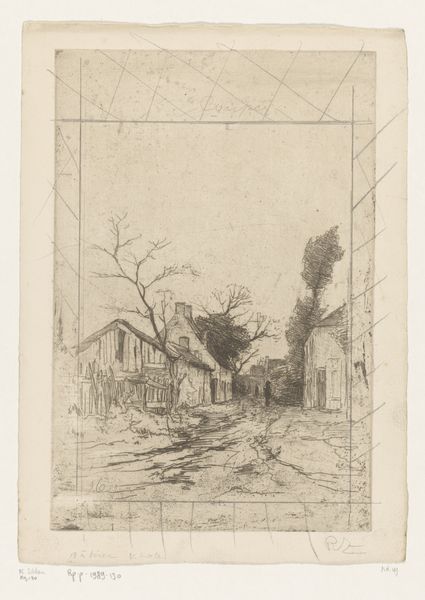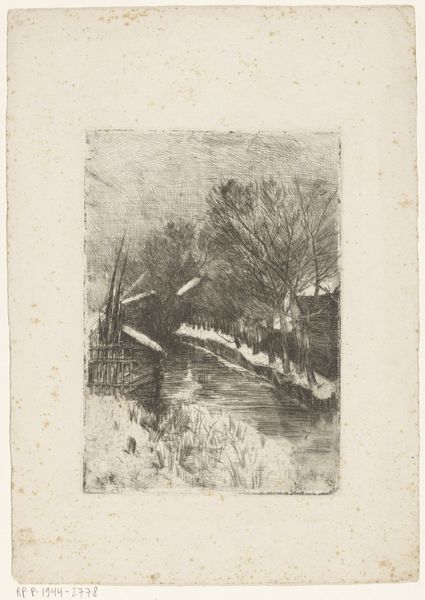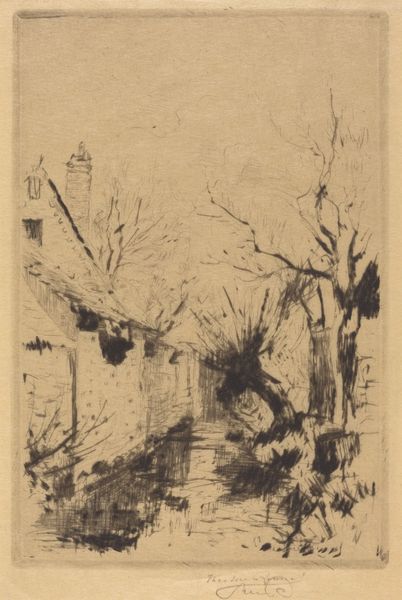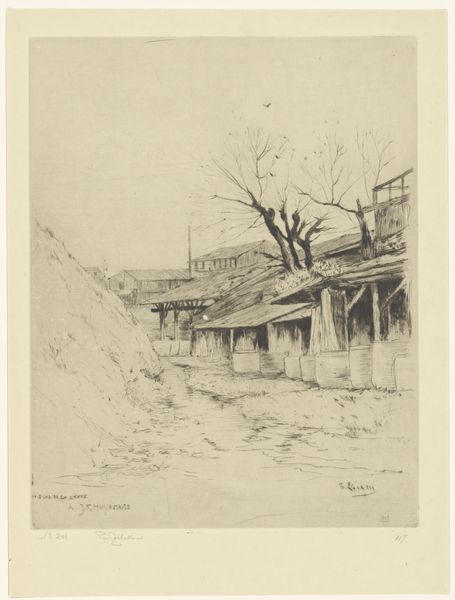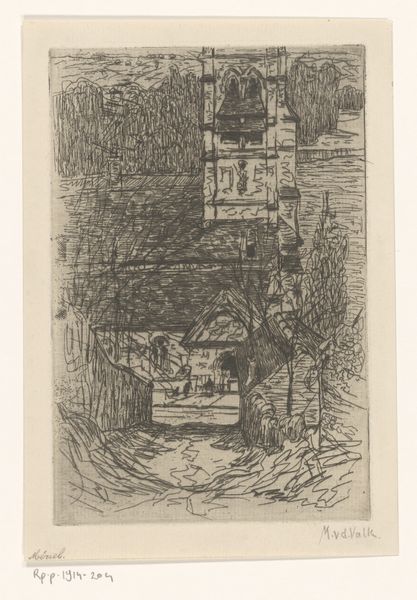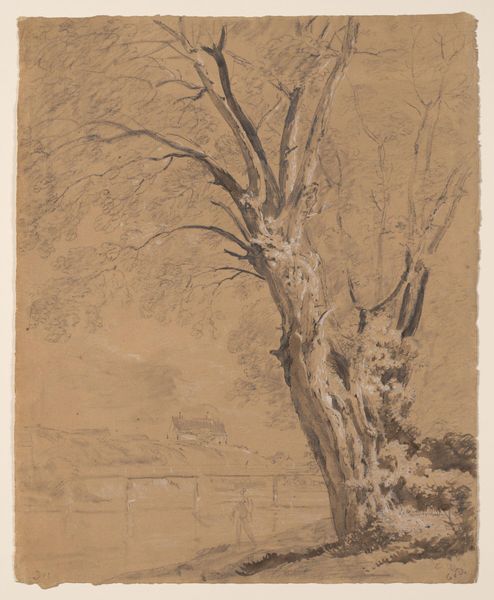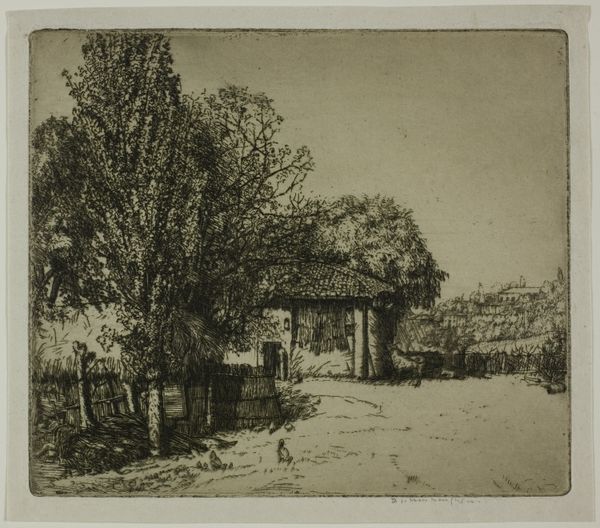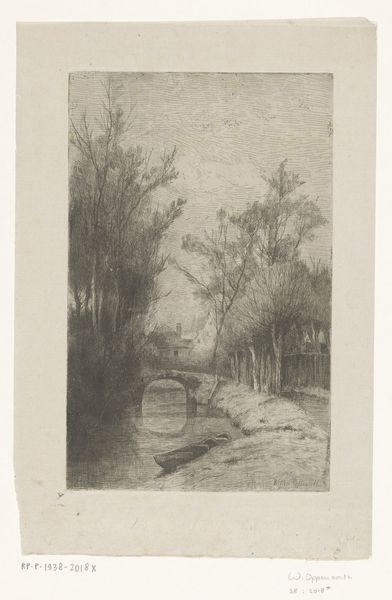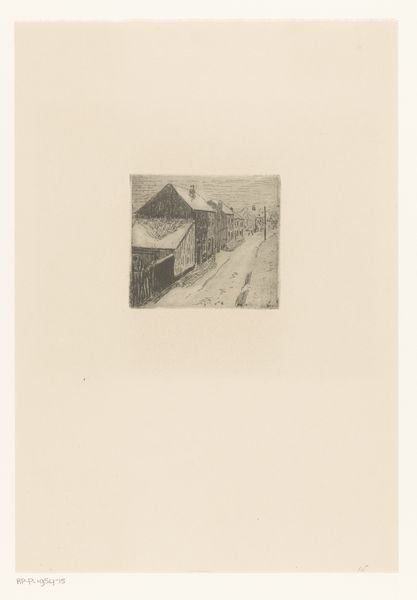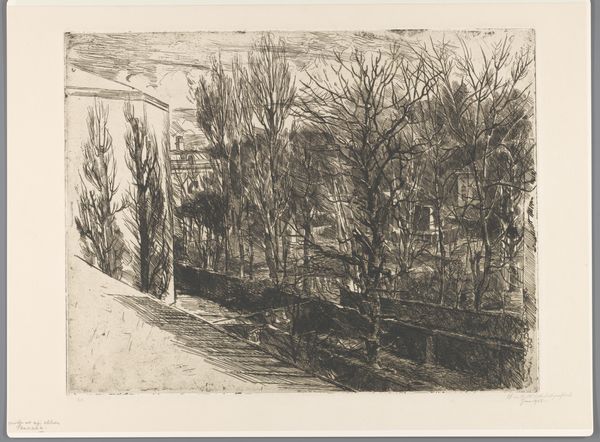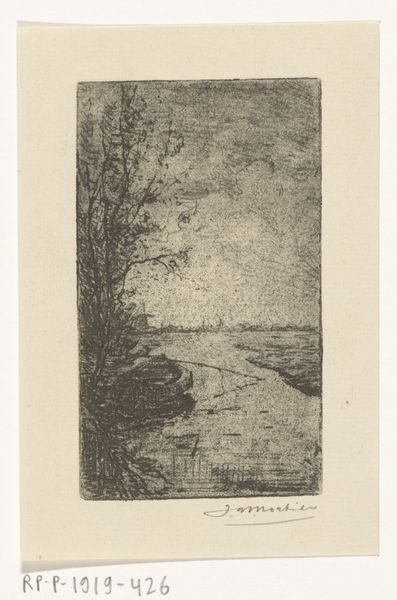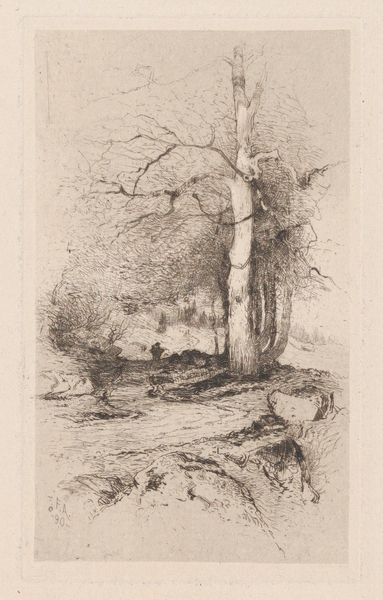
print, etching
# print
#
etching
#
landscape
#
etching
Dimensions: height 149 mm, width 110 mm
Copyright: Rijks Museum: Open Domain
Editor: Here we have Philip Zilcken’s etching, “Weg langs gebouwen en bomen,” which translates to "Road along buildings and trees," created sometime between 1867 and 1890. I find the starkness of the etching quite haunting. What draws your eye? Curator: I’m immediately struck by how the stark lines carve out a landscape that feels simultaneously familiar and dreamlike. Zilcken has created a world saturated with cultural memory. Look at the buildings. Their positioning evokes a sense of enclosure and history, like fortresses protecting untold narratives. Do you sense that too? Editor: I do. The buildings, rendered in such detail despite the simplicity of the medium, feel as though they are guarding the road ahead. The skeletal tree looming over everything only adds to this atmosphere. Is that intentional? Curator: The tree serves as more than mere scenery. The bare branches, reaching into the sky like supplicating arms, might signify a spiritual yearning, or perhaps, a silent lament. Remember that trees in art often stand for life cycles and connection, not only to the earth, but to something beyond. Editor: So, it's less about the literal road and more about what it represents? A journey, perhaps? Curator: Precisely! Consider also the etching itself – a technique requiring meticulous layering and a commitment to detail. The repetition of lines mimics the repetition of experiences in life. What emotions do the bare trees convey to you? Editor: There is an honesty and vulnerability to the imagery. I also now understand more how the symbolism amplifies the emotion conveyed by the bare road, architecture, and that solitary tree. Thank you! Curator: And thank you. Seeing Zilcken's world through your eyes reminds me that these images continue to shape our understanding of memory and meaning.
Comments
No comments
Be the first to comment and join the conversation on the ultimate creative platform.
